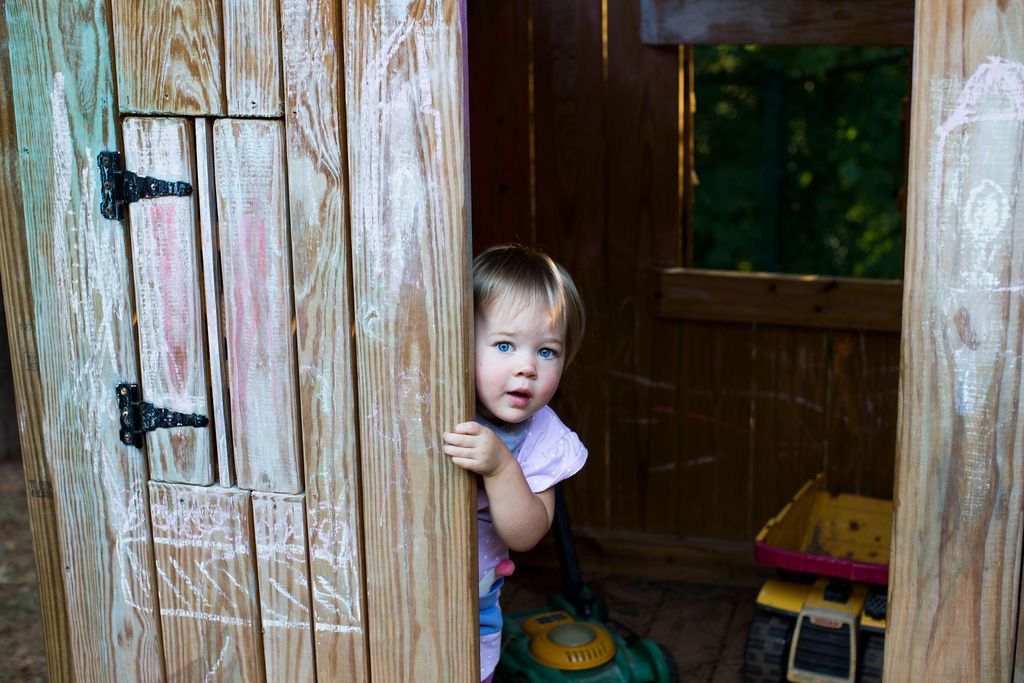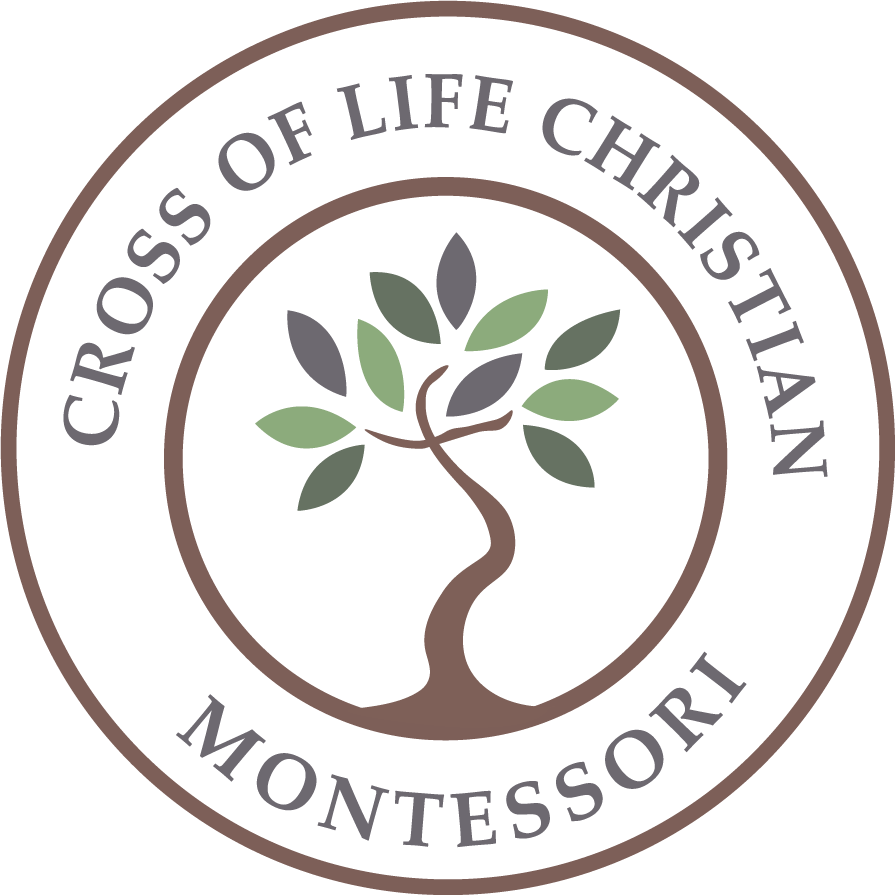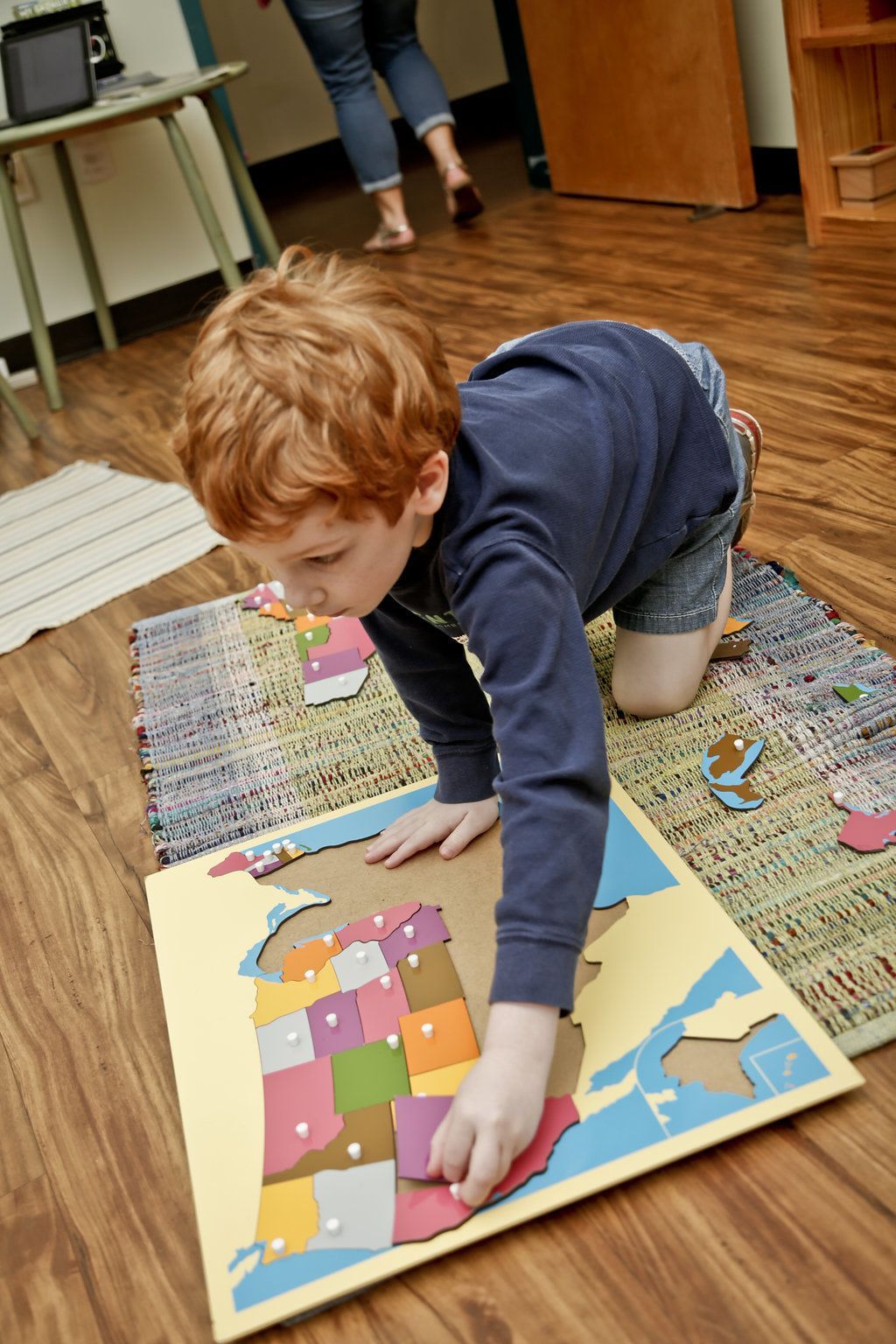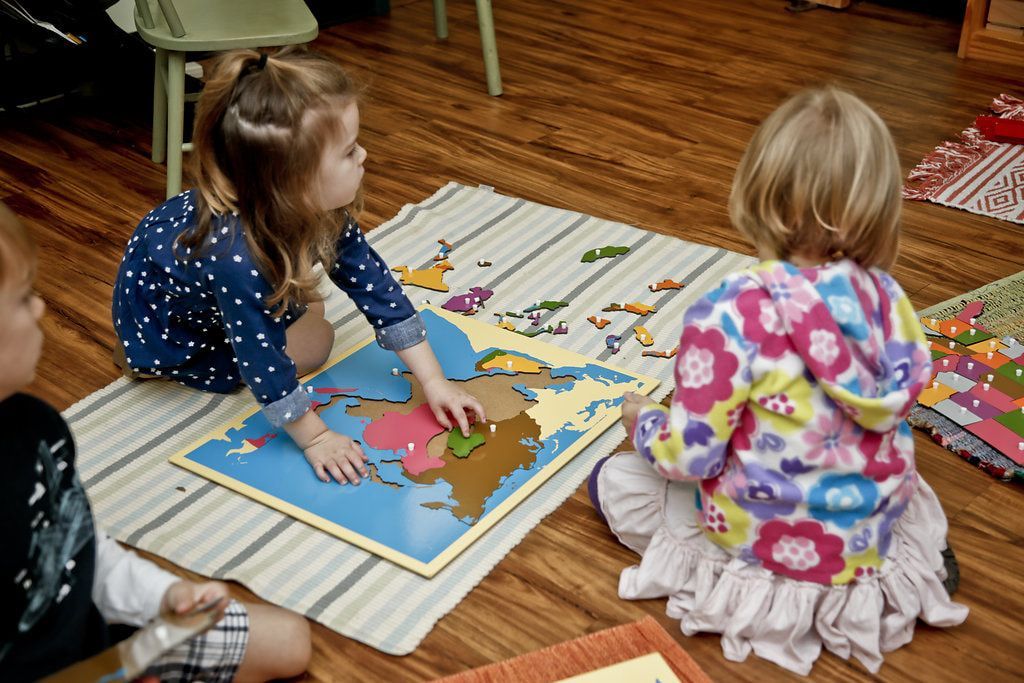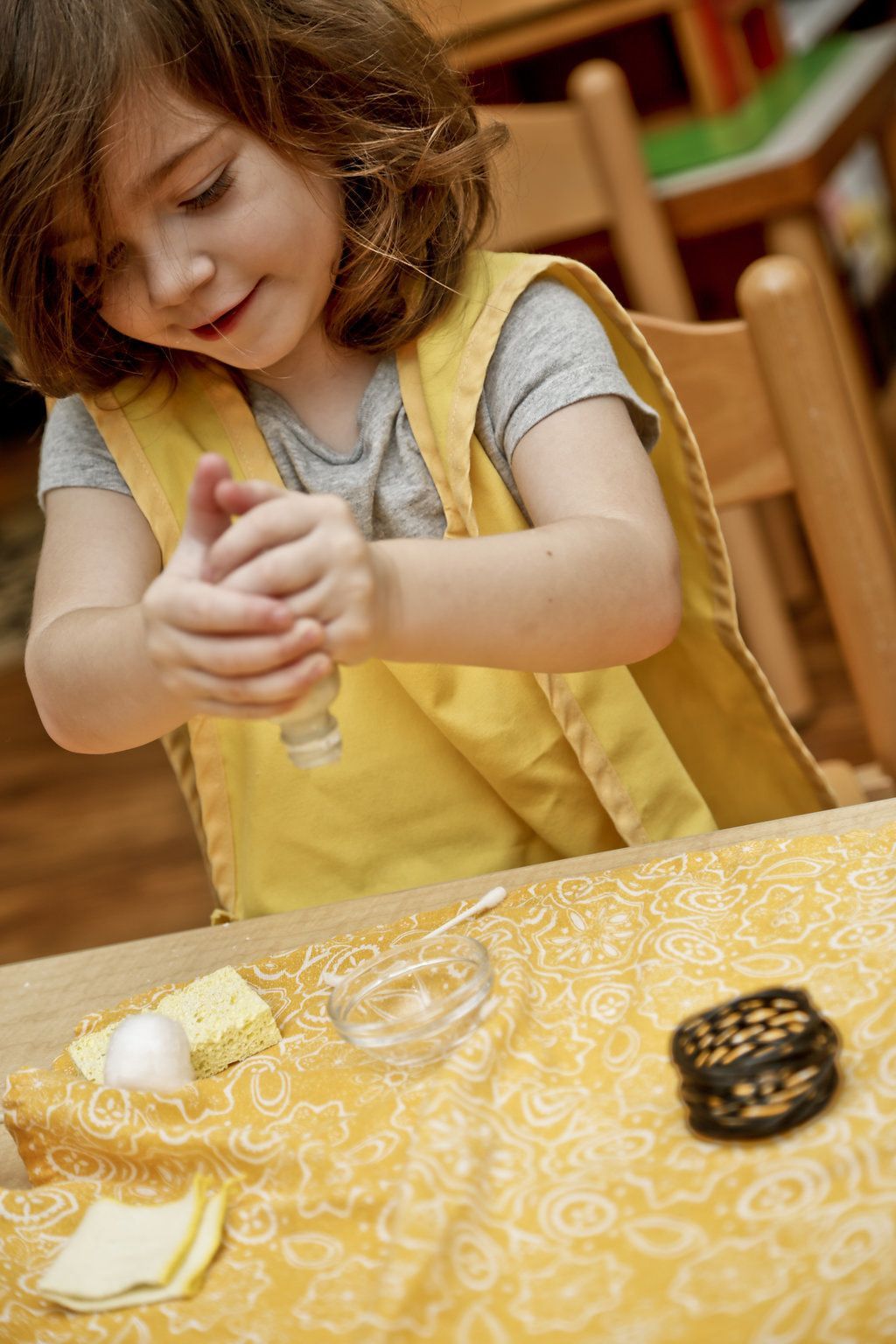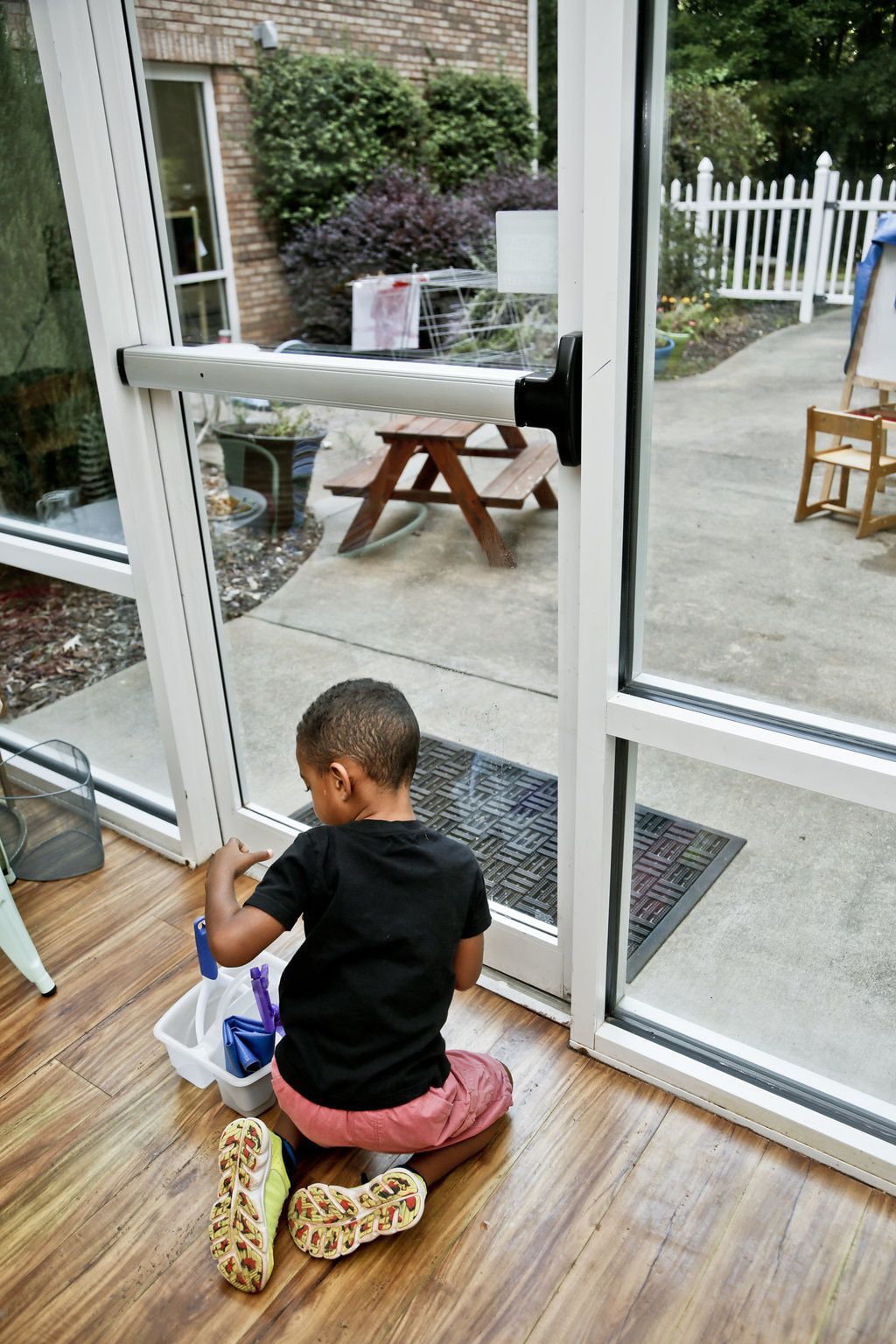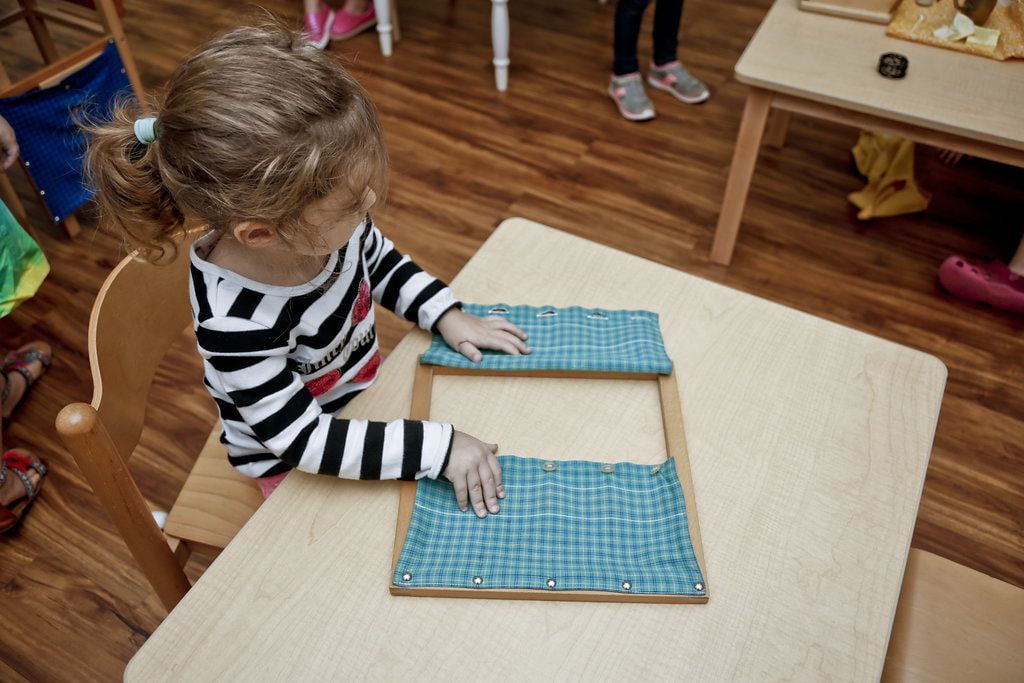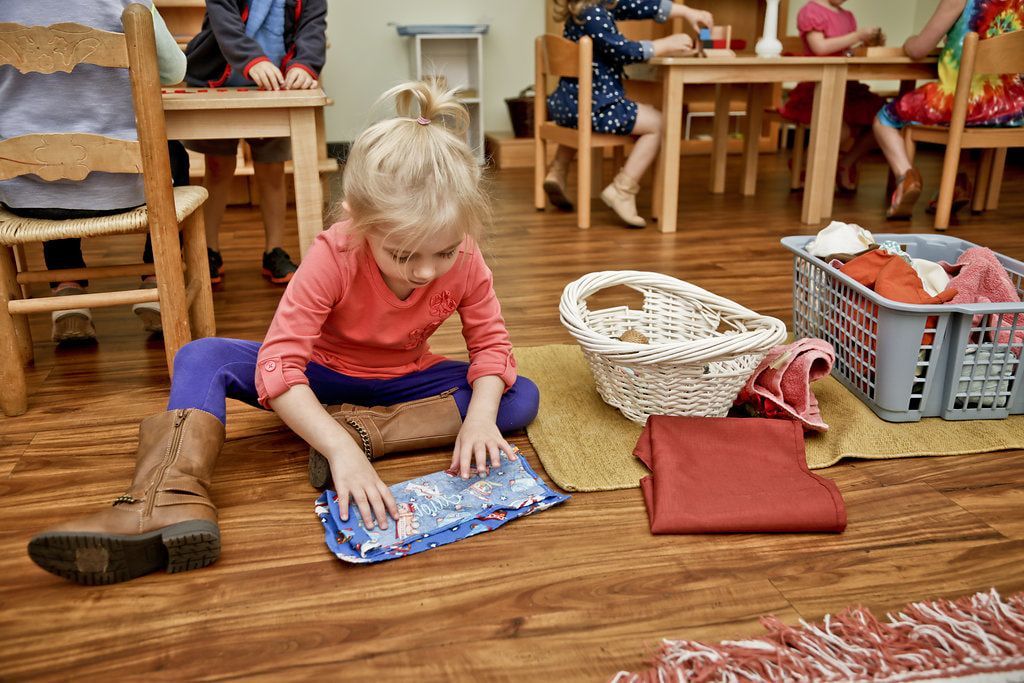
Every morning, the children start with a job. M above is folding napkins for lunch. These small jobs help the children settle into the routine for the day and allow them to contribute to the community in an important way
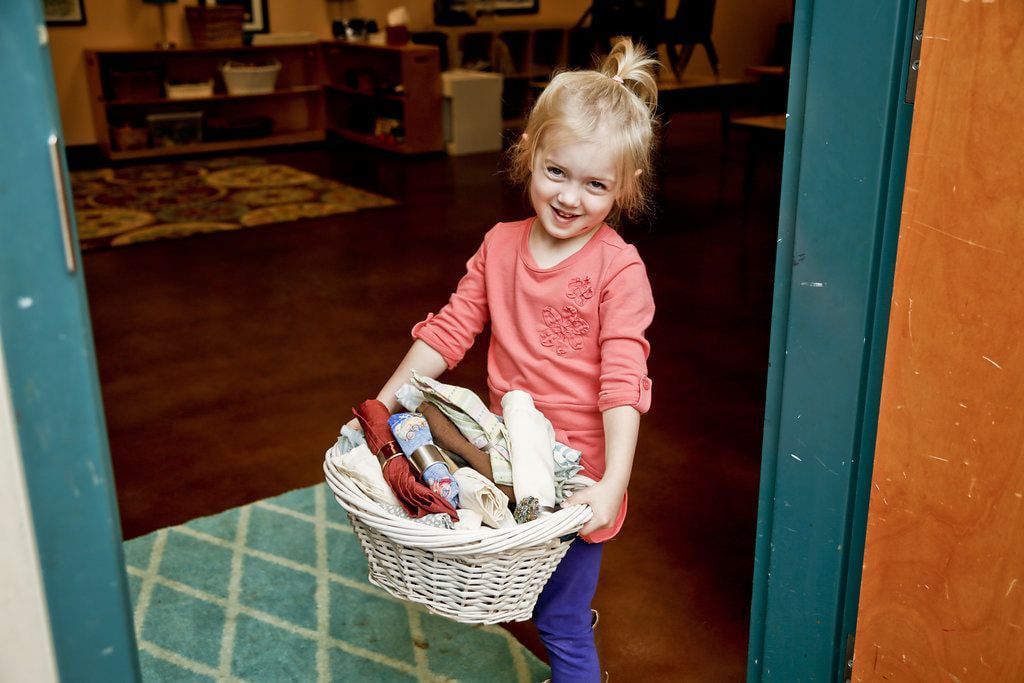
Look at all the napkins she folded and put in napkin rings! Now the children can use them for lunch.
Geography is an important part of the curriculum. One way the children learn about other countries is through puzzle maps. There is a puzzle map for the continents, one for the US, and one for each continent. The ones pictured here are Africa, Asia, and the United States. Little known fact - the white knob on each puzzle piece is in the location of the state or country capital!
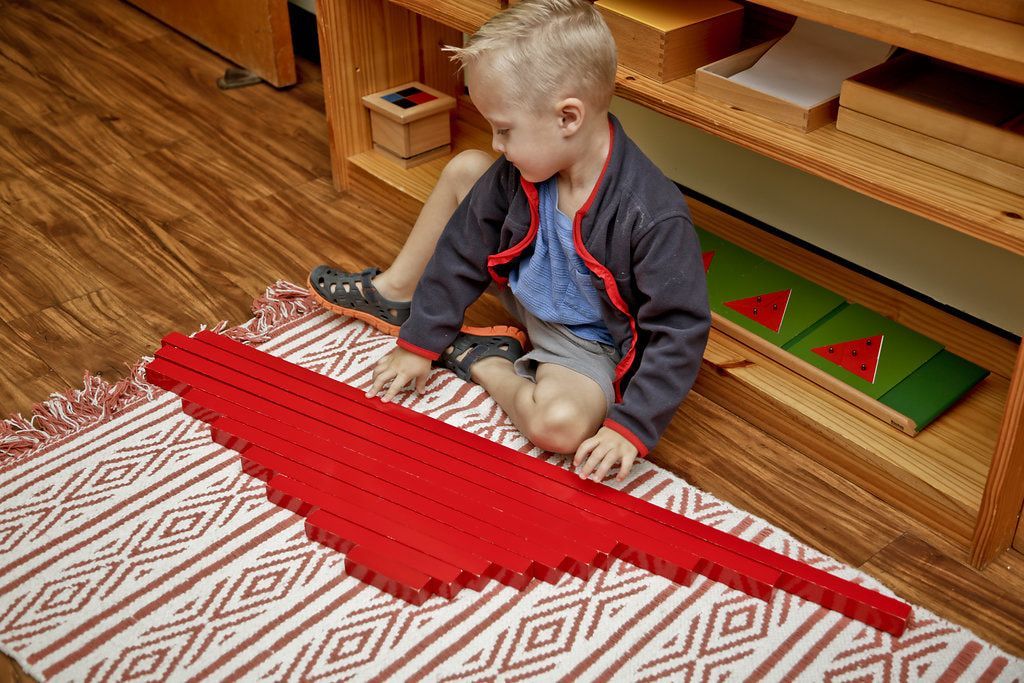
This three year old is working on the Red Rods. This is a material that allows the child to experience the quality of length. It is also an indirect preparation for later math work.
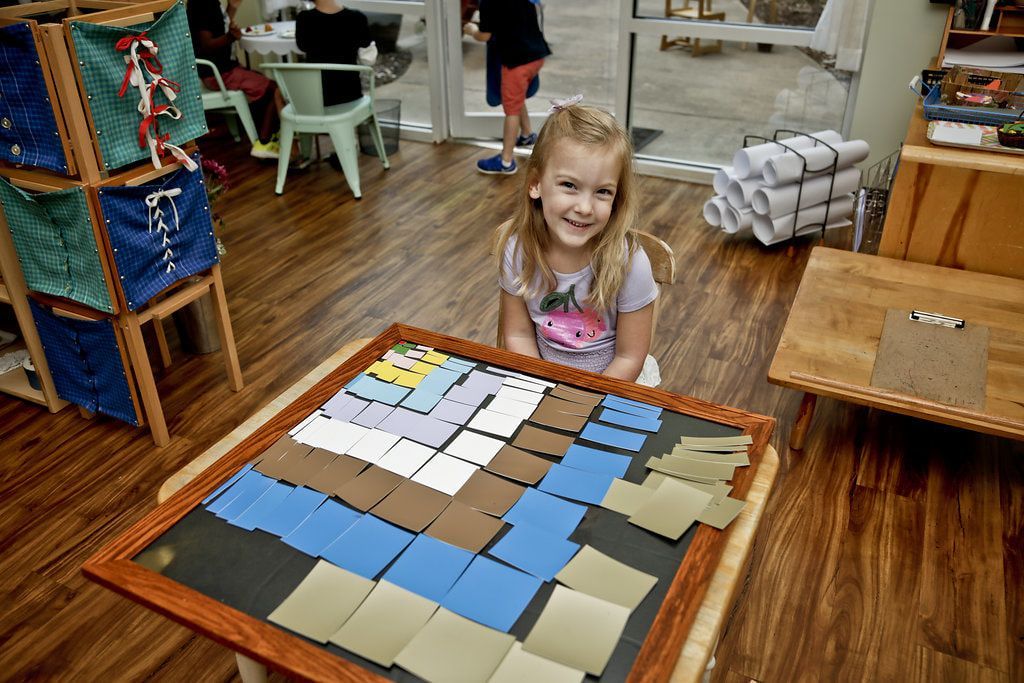
Pictured here is the Decanomial Square, It is a visual representation of the decanomial equation - the squares of all numbers 1-10. The small red dot in the upper left represents the 1 squared. What a great way to see how the equations grows exponentially!
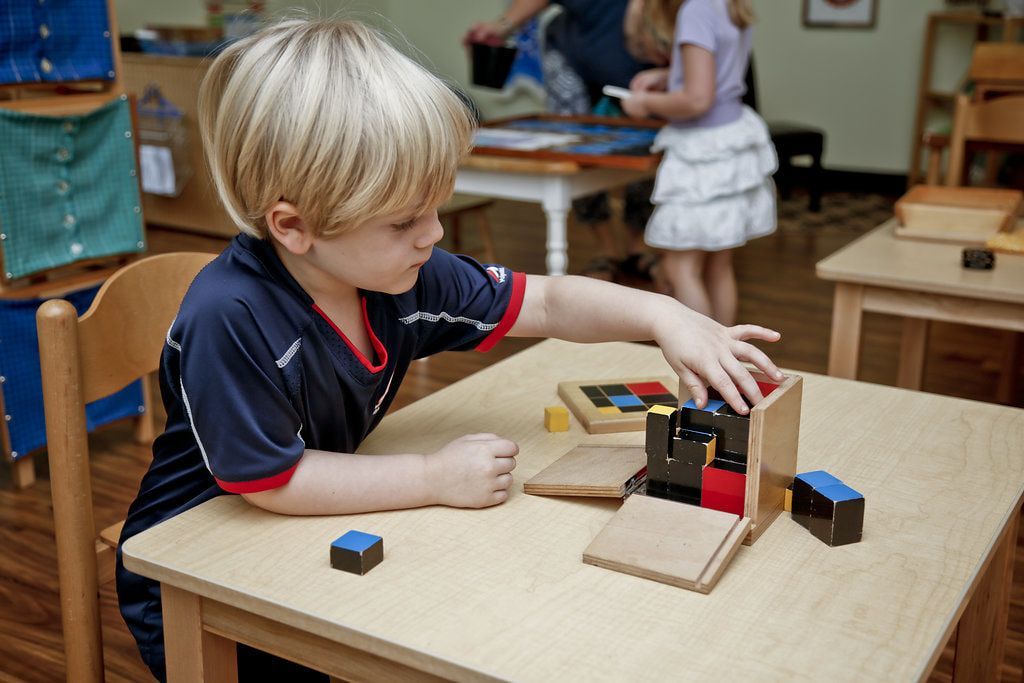
This boy is working on the binomial cube. It is a 3D representation of the binomial equation in the form of a puzzle. The Montessori math materials are absolutely amazing!
Here, we have a polishing activity and a window washing activity, which are part of the Practical Life curriculum. Polishing and washing items in the environment allow the child to help keep the materials beautiful. It also builds focus, concentration, hand strength, and self esteem as the child contributes positively to the class.
The button frame is also part of the Practical Life work. It gives the child to opportunity to perfect her buttoning skills while removing the emotional component of having the buttons on her own clothes. There are 10 dressing frames, each one focusing on a different type of closure.
This is a Metal Inset, which is part of the Language curriculum. There at 10 shapes on the Metal Inset shelf. The child traces a shape and carefully fills it in using vertical lines, which get closer and closer together as the child refines her skills. This work is a direct preparation for writing, as well as a beautiful and creative artistic activity.

This child is working on language activities also.
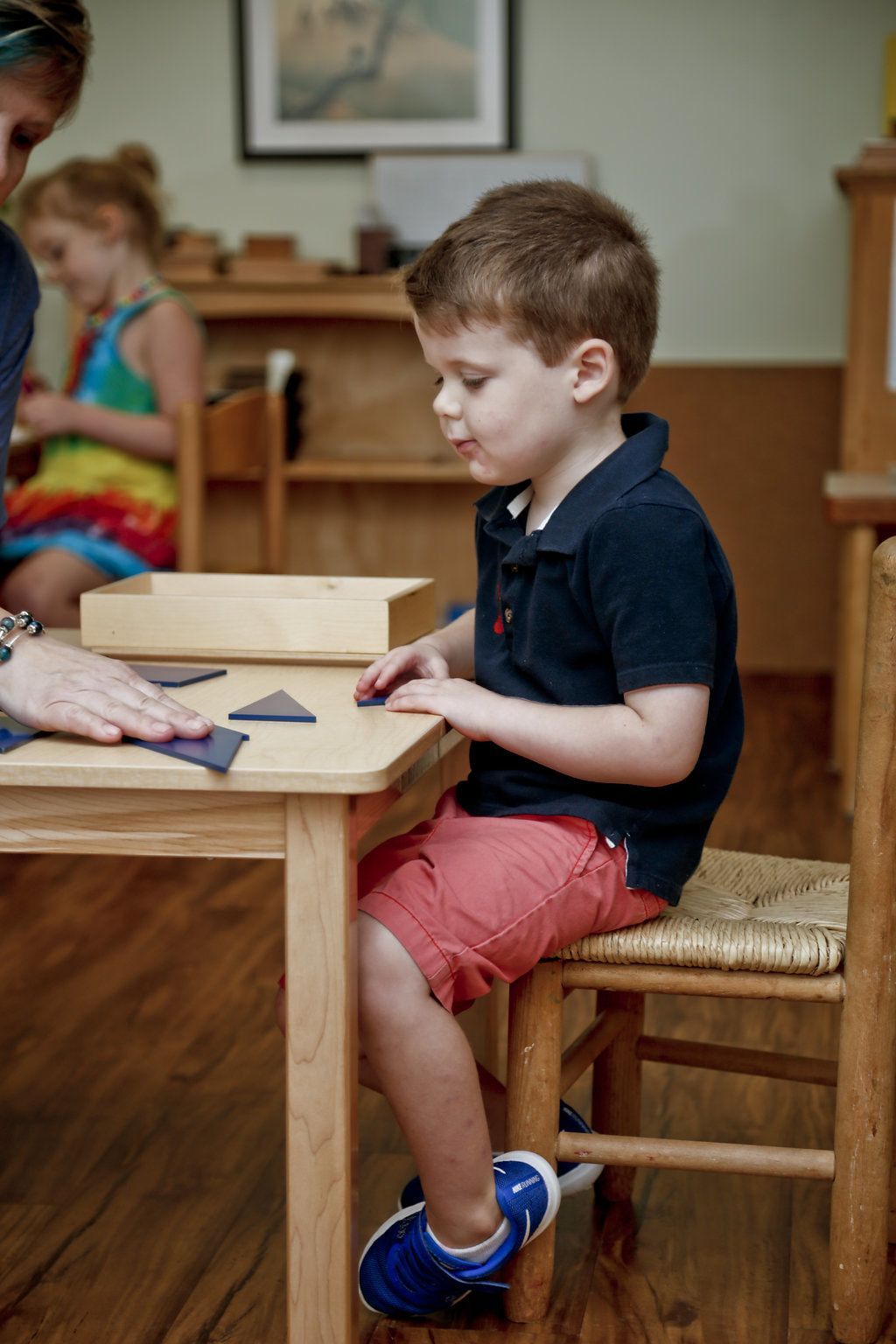
This is a Geometry exercise that allows the child to experience the idea that all linear shapes are made from triangles.
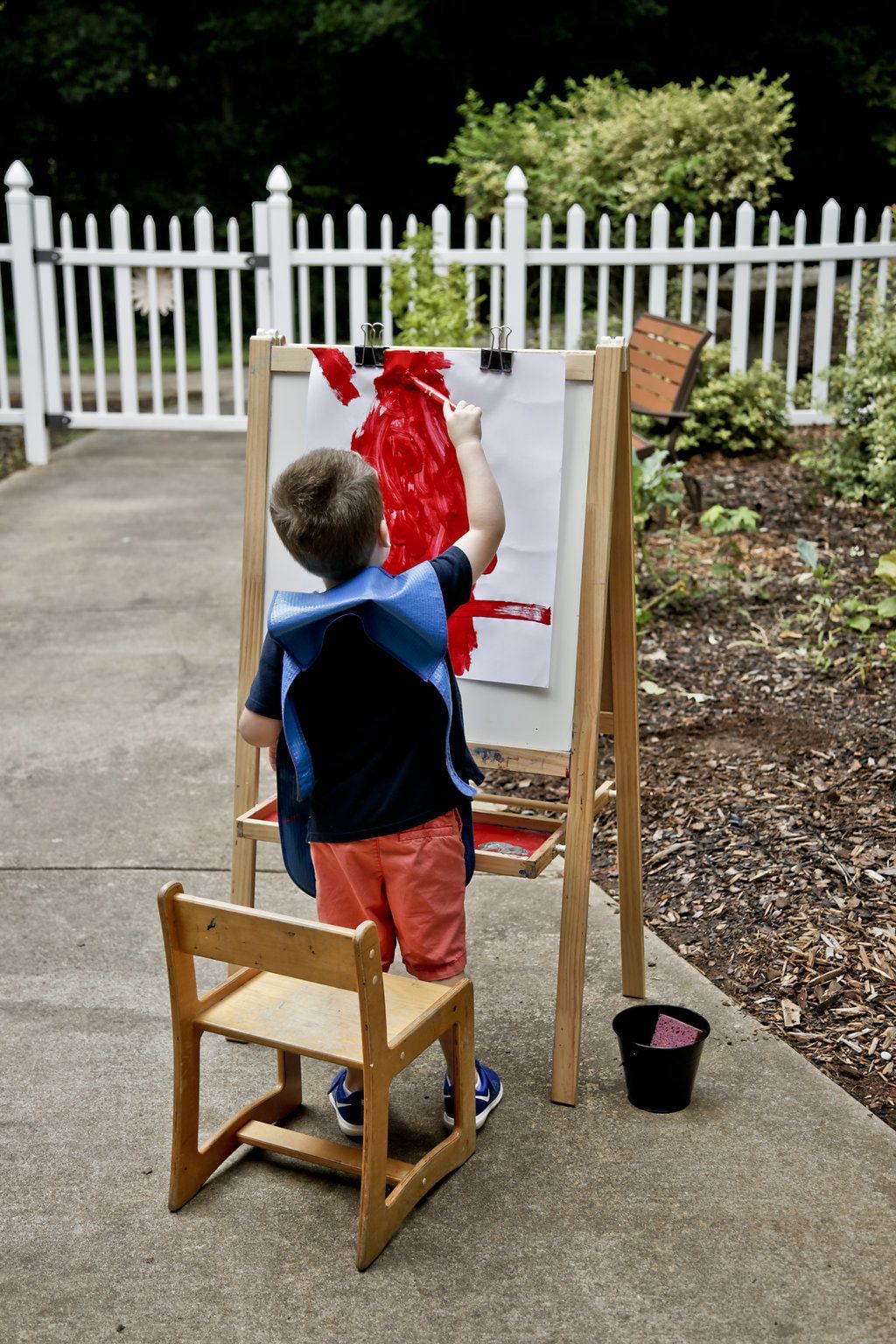
The courtyard offers a lovely place to paint!
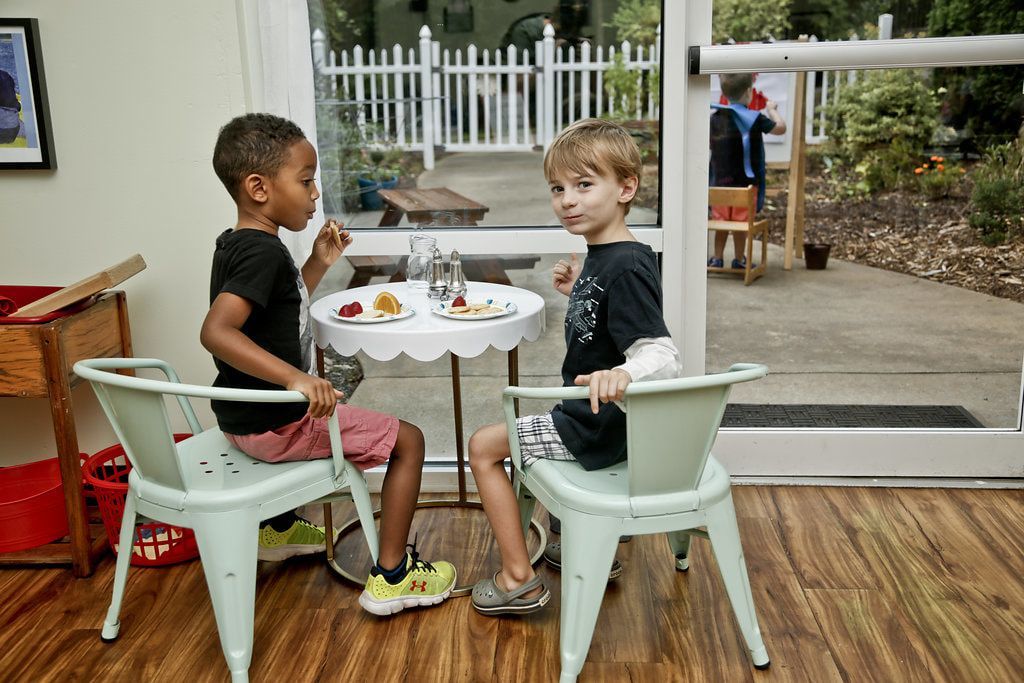
Snack always tastes better with a friend!

We hope you enjoyed taking a peek into our classroom! Many thanks to Meg Porter of Meg Porter Photography for the beautiful images in this post. She will be taking family photos as part of a school fundraiser - click here for details and to sign up!
